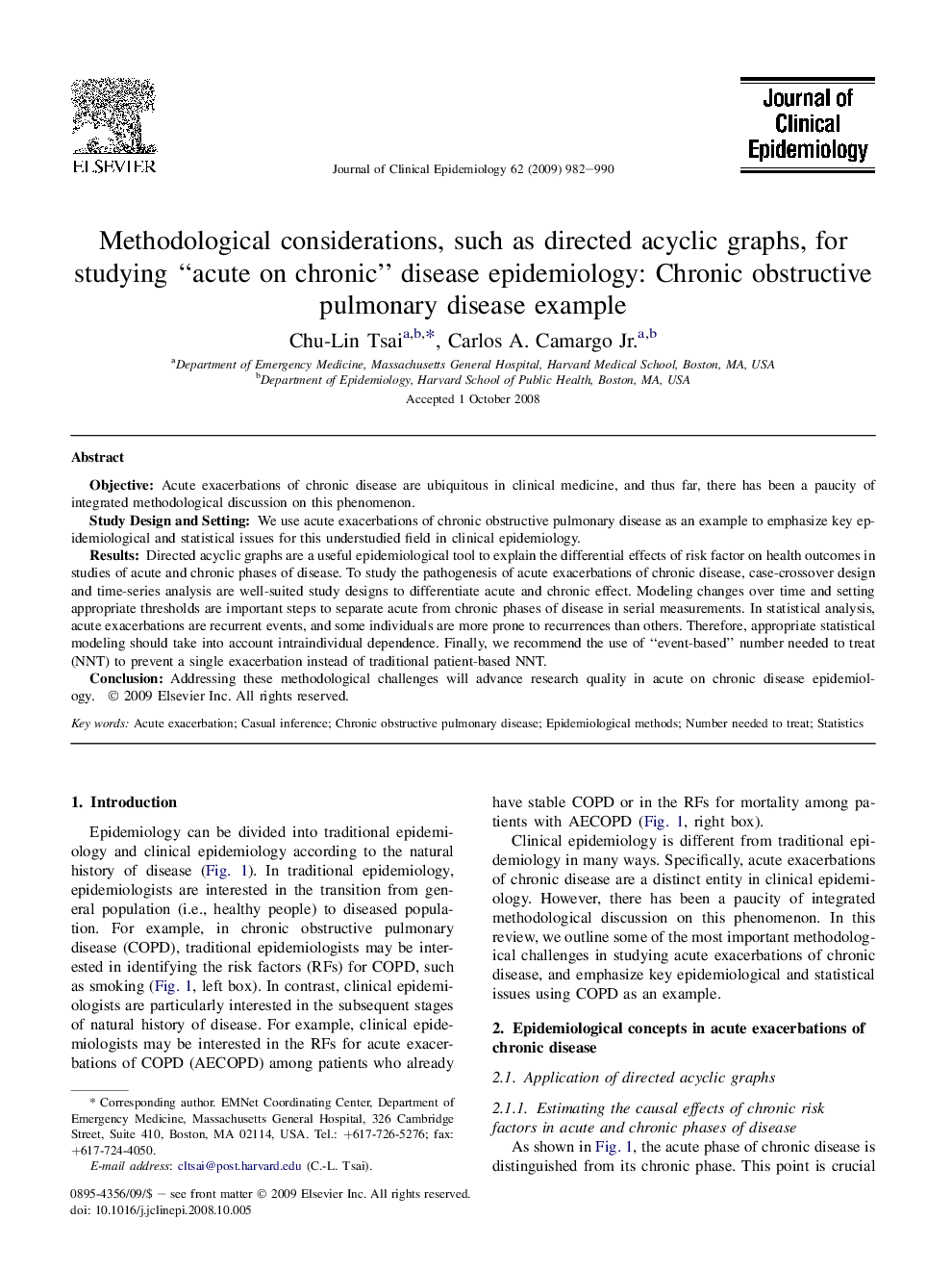| کد مقاله | کد نشریه | سال انتشار | مقاله انگلیسی | نسخه تمام متن |
|---|---|---|---|---|
| 1082612 | 950957 | 2009 | 9 صفحه PDF | دانلود رایگان |

ObjectiveAcute exacerbations of chronic disease are ubiquitous in clinical medicine, and thus far, there has been a paucity of integrated methodological discussion on this phenomenon.Study Design and SettingWe use acute exacerbations of chronic obstructive pulmonary disease as an example to emphasize key epidemiological and statistical issues for this understudied field in clinical epidemiology.ResultsDirected acyclic graphs are a useful epidemiological tool to explain the differential effects of risk factor on health outcomes in studies of acute and chronic phases of disease. To study the pathogenesis of acute exacerbations of chronic disease, case-crossover design and time-series analysis are well-suited study designs to differentiate acute and chronic effect. Modeling changes over time and setting appropriate thresholds are important steps to separate acute from chronic phases of disease in serial measurements. In statistical analysis, acute exacerbations are recurrent events, and some individuals are more prone to recurrences than others. Therefore, appropriate statistical modeling should take into account intraindividual dependence. Finally, we recommend the use of “event-based” number needed to treat (NNT) to prevent a single exacerbation instead of traditional patient-based NNT.ConclusionAddressing these methodological challenges will advance research quality in acute on chronic disease epidemiology.
Journal: Journal of Clinical Epidemiology - Volume 62, Issue 9, September 2009, Pages 982–990